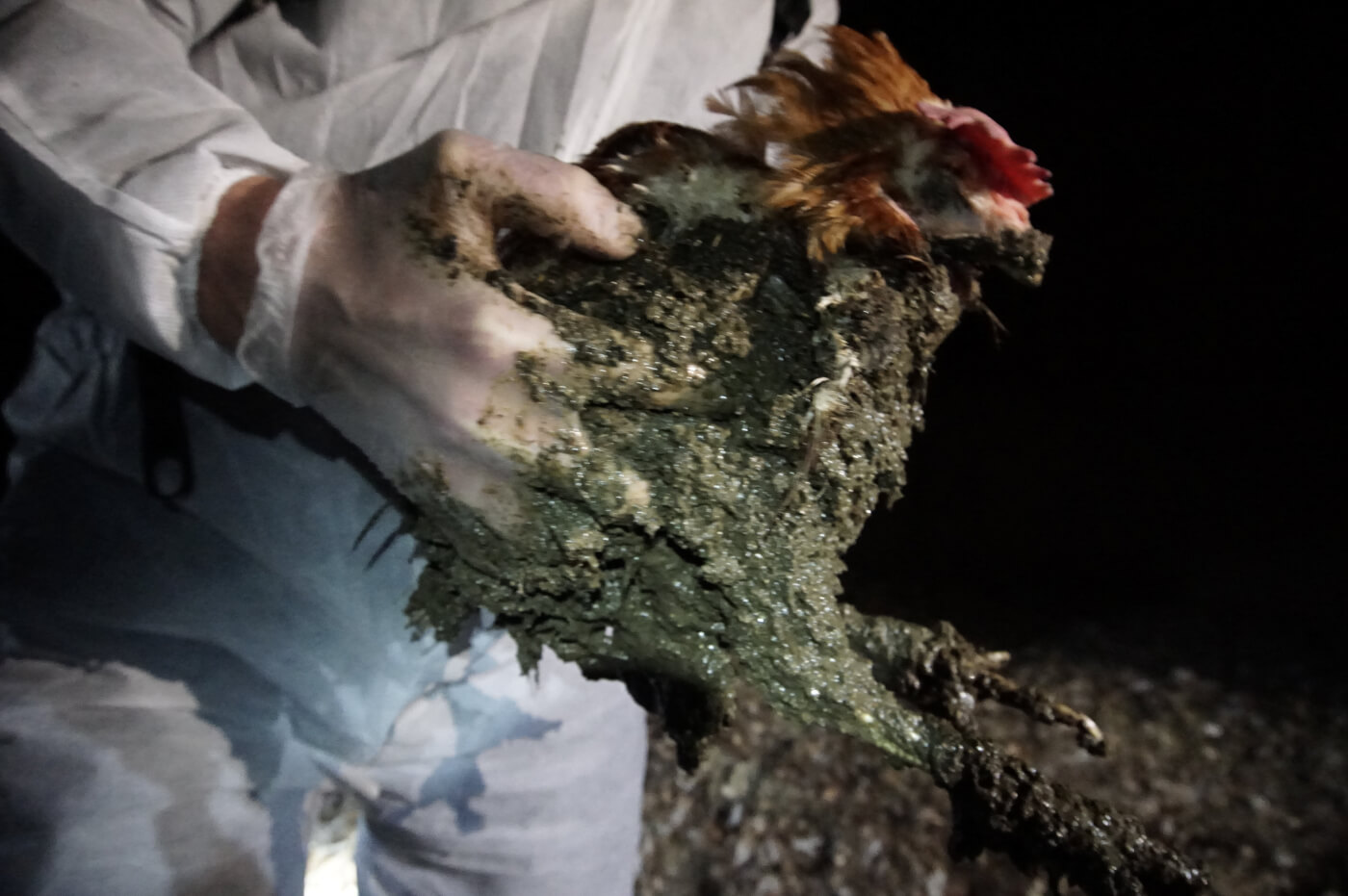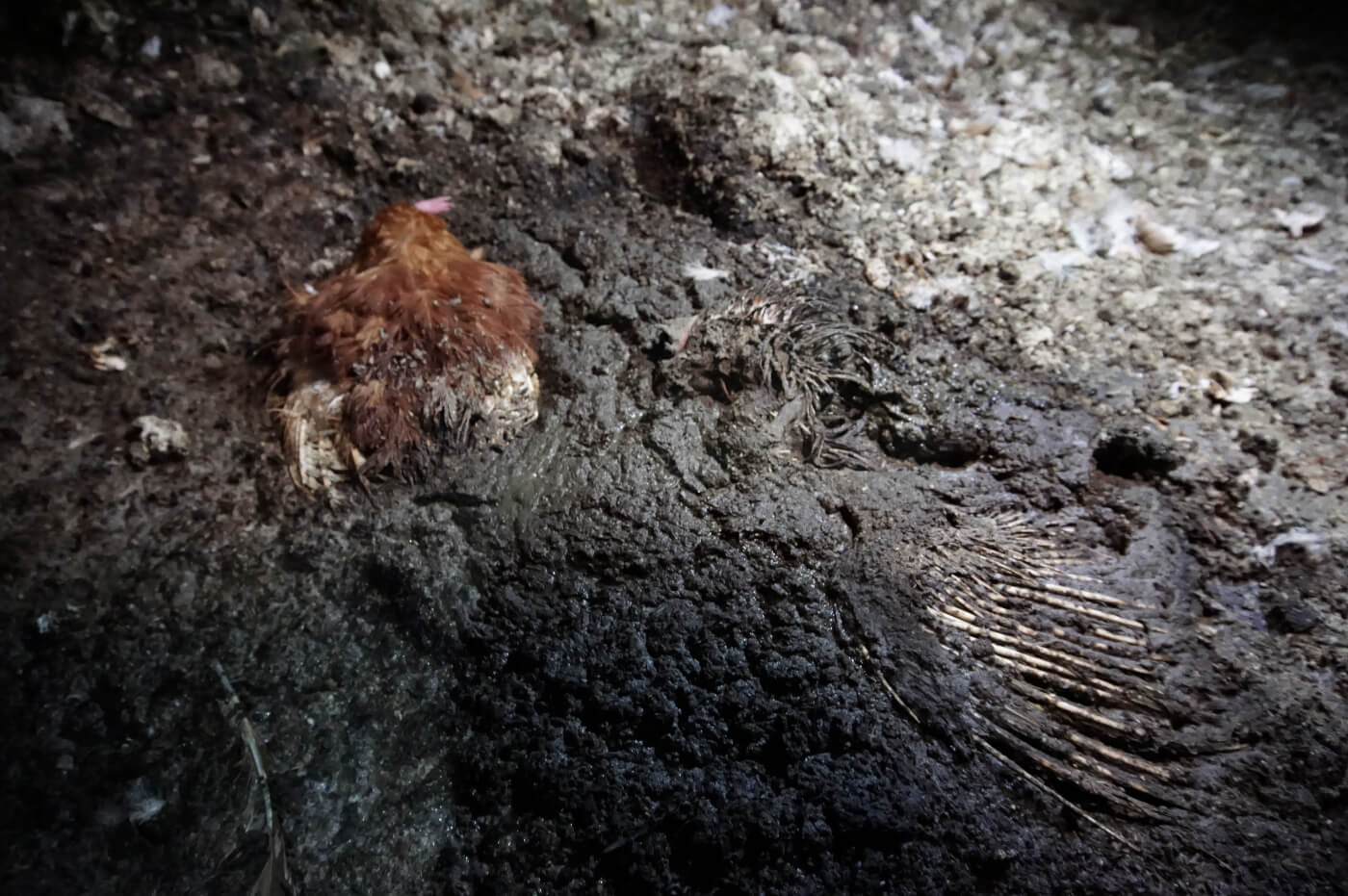Kat Graham Exposes Hens Buried and Trapped in Manure—Take Action Today!

As first reported by CTV News, a new exposé—created from footage captured by activist Jeff Rigear and others and narrated by actor Kat Graham—reveals the suffering and death of hens on three egg farms in Abbotsford, British Columbia. The activists found hundreds of dead birds—some rotting in cages alongside the living—and dozens of others barely clinging to life and even buried in manure pits below the enclosures.
The activists’ findings prompted the British Columbia Society for the Prevention of Cruelty to Animals to raid one of the farms. An investigation is underway. In July 2018, the BC Egg Marketing Board announced that the farm had been decommissioned and is no longer permitted to keep hens for egg production. But billions (yes, billions) of other hens in conditions like these still need your help.
What follows is a look behind the closed warehouse doors of egg factory farms as well as tips for helping to end this suffering.
Left for Dead Amid Piles of Feces
Waste fell through the cage flooring into pits and collected in piles up to 5 feet high, which teemed with maggots and other insects. Amid the excrement, the eyewitnesses found the bodies of more than 200 hens, who had evidently fallen while being moved in or out of their cages and were just left to die, likely from dehydration or starvation. Many were buried alive in the manure.
Dozens of birds were still alive in the pits. Abandoned with no food, water, care, or hope of escape, many were emaciated and stuck, even up to their necks, in a slurry of feces. They were rescued and rushed to a veterinarian.
Veterinary expert Dr. Katherine van Ekert noted that these hens were “suffering from extreme illness: They were so incapacitated that they did not struggle to move away when handled—a natural flight response. Their eyes were also sunken and their eyelids closed—signs indicative of severe depression and advanced disease states in chickens.”



Trapped and Stressed in Cramped Cages
In the cages above the pits, hens fared little better. Curious, intelligent, and highly social, they were deprived of everything that is natural and important to them. They were packed so closely together that they couldn’t even spread their wings, let alone establish a social order. Countless birds suffered from extensive feather loss, which is often the result of stress-induced fighting and self-mutilation.


Caged With the Dead
Many hens had died and begun to rot inside the cages. The survivors were forced to live alongside their rotting cagemates for days on end. According to veterinary expert Dr. Christine Capaldo, “In my professional opinion, forcing live hens to be confined with decaying bodies would cause extreme psychological trauma, distress, and suffering; exposes live birds to disease, bacterial contamination, and harsh odors; and constitutes abuse and neglect.”

Unable to Escape Their Own Waste
The hens were packed closely together inside cages stacked on top of each other. Those above had no choice but to urinate and defecate on the ones below. Chickens are clean, fastidious animals who need to preen and take dust baths regularly. But on farms like these, they’re forced to live in filth.

Injured, Sick, and in Pain
One hen’s cloaca was prolapsed, a very painful—and sometimes fatal—condition often caused by a poor diet or the strain of laying far more eggs than is natural. (She was rescued by the eyewitnesses and given veterinary care.) Many others suffered from painful injuries and inflamed feet, the result of standing on wire flooring without any relief. With nothing to wear them down, their claws had become overgrown.
Ammonia fumes caused by the accumulation of excrement permeated the air, irritated the hens’ lungs, and burned their skin. According to Dr. van Ekert, these burns cause a condition known as “scald,” which feels like “being scalded with hot water.”


An Industry of Despair
In Canada alone, around 20 million hens are being exploited for their eggs in warehouses like these. Worldwide, billions endure similar treatment. These horrifying conditions are the only existence they will ever know. Meanwhile, their brothers are deemed useless by the egg industry and killed shortly after hatching. “Layer” hens are selectively bred to produce as many eggs as possible. After about two years of exploitation, they’re “spent” and their egg production declines. Many are then hauled off to slaughterhouses, where their throats are slit and their bruised and battered flesh is used to make pet food or soup.

You Can Help Stop This!
The best thing that you can do for hens is to refuse to buy their eggs and flesh. With so many delicious, healthy alternatives, it’s never been easier to leave animal-derived foods off your plate.
Please also urge Egg Farmers of Canada to stop its farmers from abandoning hens in manure pits.